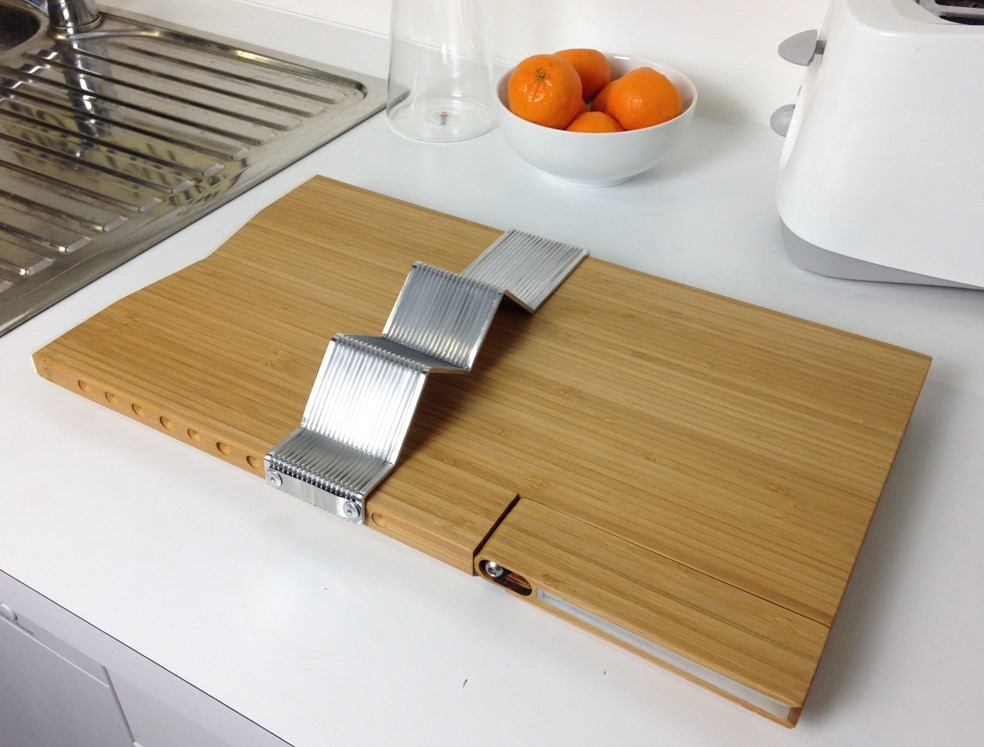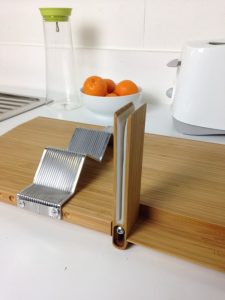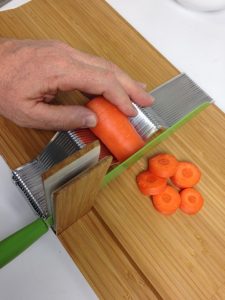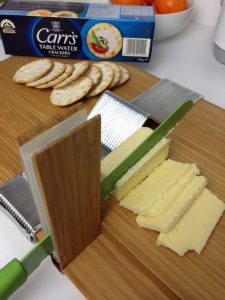Local Sydney HSC student Emily made the decision to design and produce a chopping board that would make preparing food so much easier. After much research – including consulting neurologists, Shake It Up Founder Clyde Campbell and even asking her grandparents to test the product, Emily’s innovative design was not only selected by the Powerhouse Museum for its current exhibition of innovative designs by HSC students but also won the top award, the MAAS Innovation in Design Award.

Shake It Up asked Emily a bit about her design:
As part of my Design and Technology major project for the HSC, I have created a food preparation board that seeks to target the most common symptom of Parkinson’s disease- uncontrollable tremors. The premise behind the design was not only to generate a kitchen device that would allow for safe use of food related tools, but also to instill a level of independence and empowerment via the simple, day-to day activity of cooking. I also felt it was important to design a product that was inexpensive whilst providing high quality outcomes for its user, as the financial impact on both the individuals diagnosed and their families is colossal. After ongoing research in conjunction with Clyde Campbell and Professors from both Sydney University and La Trobe University, along with multiple patients, I developed a board, fit with a variety of features tailored to meet the specific requirements of any patient of Parkinson’s with tremors.
Some central elements of the design include the knife guide, which pivots and locks vertically with the board to stabilise any knife and enables the user to cut foods safely, from bread and meats to vegetables and fruit. This is supported by a food caddie that allows for hands free use and consistency in size of cuts and cooking time. Bowls and tin cans can also be steadied for stirring, opening and pouring. All features are detachable for washing and can be stored flush with the board. This is turn, removes any stigma behind the design being perceived as an ‘aid product’ and opens the market to anyone who is looking for an added level of stability and support in the kitchen.





